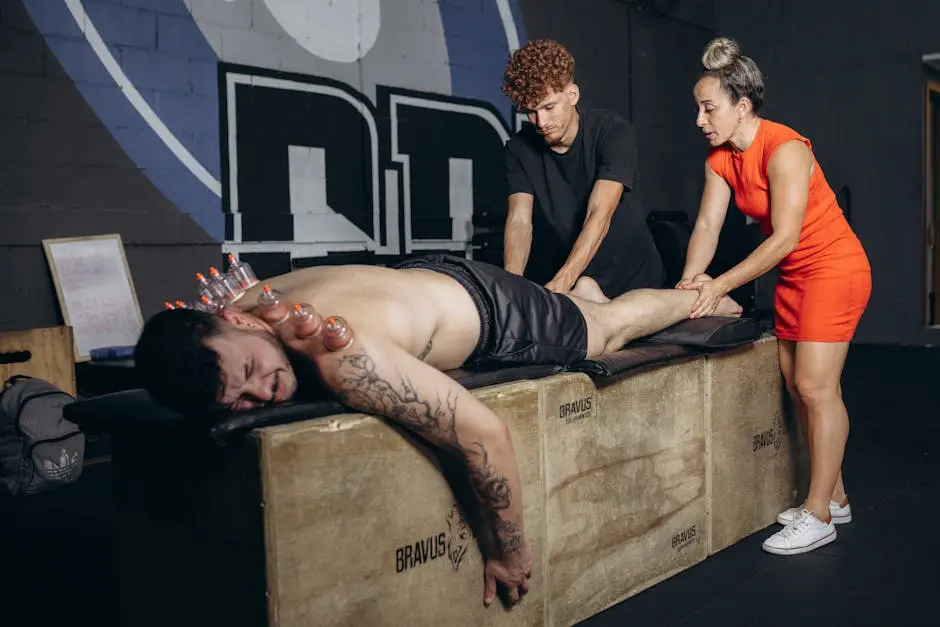Cupping therapy has been gaining popularity as a natural remedy for various ailments, including back pain. But does it actually work? In this blog, we will explore what cupping therapy is, how it may help relieve back pain, and whether there is scientific backing behind these claims.
Understanding Cupping Therapy
Cupping therapy involves placing cups on the skin to create suction, which proponents believe stimulates blood flow and promotes healing. Let’s delve into how this practice works and its historical roots.
Historically, cupping dates back thousands of years to ancient Egyptian and Chinese cultures. This long-standing tradition highlights its significance in holistic healing practices. By creating negative pressure on the skin, cupping is thought to draw toxins and pain from deep tissues to the surface, allowing the body to heal more effectively.
The cups can be made of glass, bamboo, or silicone, and the technique may vary, including dry cupping and wet cupping. Dry cupping focuses solely on pain relief by improving circulation, while wet cupping may involve small incisions to draw out stagnant blood. Understanding these differences can help you determine which method might be more suitable for your needs.
How Cupping May Help with Back Pain
Many individuals report reduced muscle tension and pain relief after cupping sessions. We’ll explore the mechanisms that could contribute to these effects.
When the cups create suction, they may help break up stagnant energy in the body, effectively allowing for more flexibility and range of motion. This freedom of movement can greatly alleviate back pain, which often stems from tight muscles and stress.
Additionally, the practice may trigger the body’s natural pain-relieving mechanisms. Increased blood flow can aid in delivering essential nutrients to the muscles, promoting faster recovery from injuries and minimizing discomfort. This dual-action approach—relieving tension while enhancing healing—has made cupping therapy a go-to for many looking to manage back pain.
It’s important to note that individual experiences with cupping therapy can vary greatly. While some may find immediate relief, others might need several sessions before noticing significant changes. Listening to your body and working closely with a therapist can lead to the best results.
Evidence Supporting Cupping Therapy
Research on cupping therapy is still evolving, but some studies indicate positive results for conditions including chronic back pain. Here, we highlight what the scientific community is saying.
Several clinical trials have shown promising findings regarding the effectiveness of cupping therapy in improving pain levels and functionality. One study revealed significant reductions in pain scores among participants with chronic lower back pain who received regular cupping treatments. This suggests that cupping could be a valuable complementary therapy for those suffering from such conditions.
However, it’s essential to approach these findings cautiously. While some evidence supports cupping’s efficacy, more rigorous and comprehensive studies are required to conclusively establish its benefits and limitations. Therefore, integrating cupping into your treatment plan should involve discussions with healthcare providers, ensuring it aligns with your overall pain management strategy.
Potential Risks and Considerations
While cupping therapy is generally considered safe, there are potential risks. We’ll discuss who should exercise caution before trying this treatment.
Those with certain medical conditions, such as skin disorders, bleeding disorders, or pregnant women, should consult a healthcare professional before undergoing cupping therapy. While the side effects are minimal—often limited to slight bruising or discomfort at the site of suction—it’s still crucial to ensure that this therapy is appropriate for your specific health circumstances.
Also, finding a qualified practitioner is essential. An experienced therapist can help minimize risks and tailor the treatment to your individual needs, enhancing the overall safety and efficacy of the cupping process.
Integrating Cupping into Your Pain Management Routine
For those interested in trying cupping, how can it fit into a broader treatment plan for back pain? We’ll outline practical advice on combining therapies for optimal results.
Integrating cupping therapy into your pain management routine can be straightforward. For example, many people find that combining cupping with physical therapy, regular exercise, and mindfulness practices like yoga can enhance overall benefits. This multi-faceted approach not only addresses immediate pain but also promotes long-term wellness and resilience.
Moreover, keeping an open line of communication with your healthcare providers about your treatment plan is critical. They can help you navigate which therapies work best in harmony and help track your progress over time. Remember, every individual is unique, and what works for one person may not work for another.
Final Thoughts on Cupping Therapy for Back Pain
While cupping therapy may provide relief for some people experiencing back pain, it is essential to consider individual responses and consult with healthcare professionals. Combining cupping with other treatment methods may enhance overall effectiveness.





